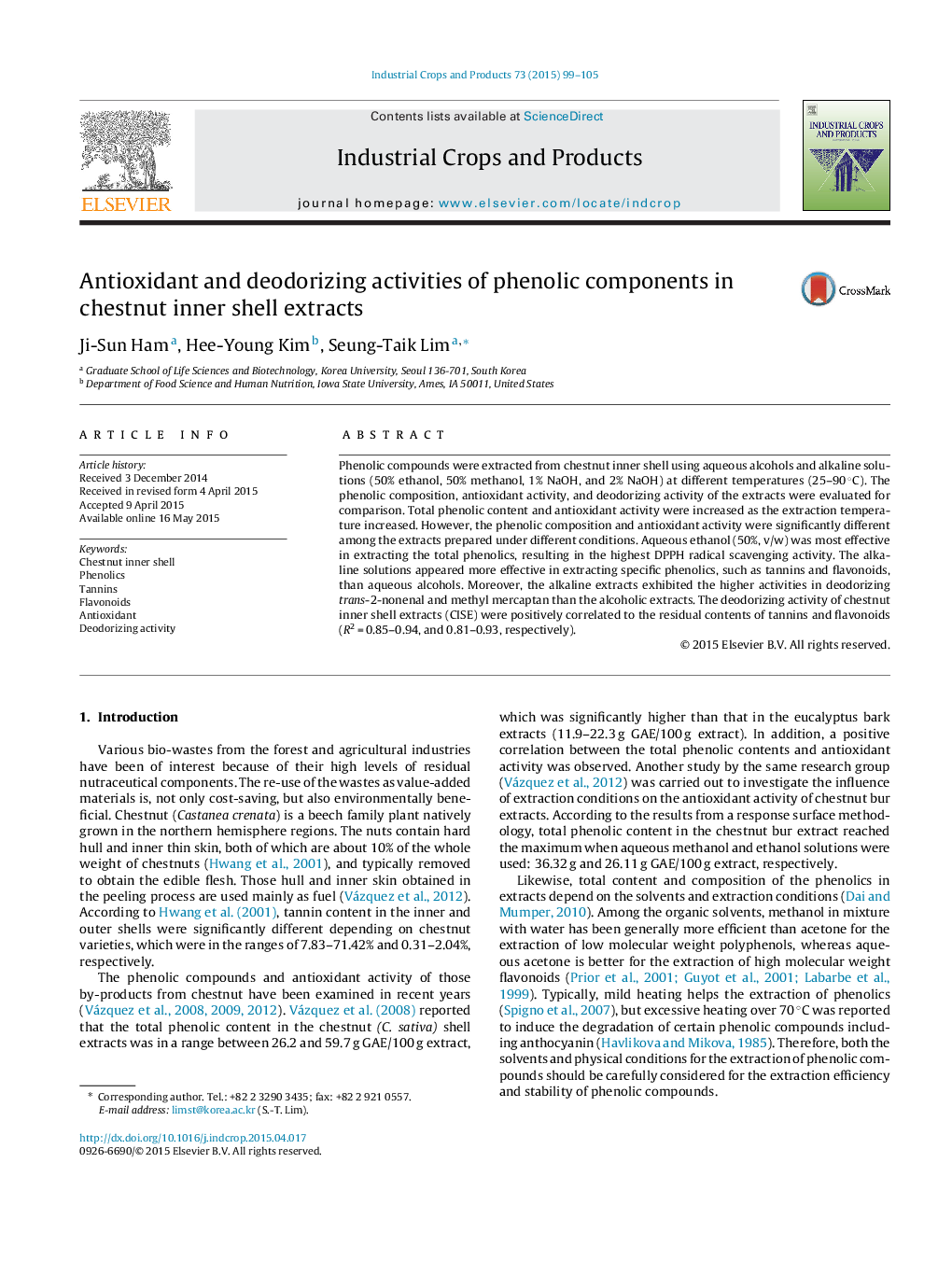| Article ID | Journal | Published Year | Pages | File Type |
|---|---|---|---|---|
| 4512717 | Industrial Crops and Products | 2015 | 7 Pages |
•Chestnut inner shell is the potential source for natural antioxidant and deodorant.•Aqueous ethanol was most effective in extracting the phenolic compounds with the highest DPPH radical scavenging activity.•Dilute alkaline solution was preferred for the extraction of the tannin and flavonoids.•The contents of tannins and flavonoids were positively correlated to deodorizing activities against trans-2-nonenal and methyl mercaptan.
Phenolic compounds were extracted from chestnut inner shell using aqueous alcohols and alkaline solutions (50% ethanol, 50% methanol, 1% NaOH, and 2% NaOH) at different temperatures (25–90 °C). The phenolic composition, antioxidant activity, and deodorizing activity of the extracts were evaluated for comparison. Total phenolic content and antioxidant activity were increased as the extraction temperature increased. However, the phenolic composition and antioxidant activity were significantly different among the extracts prepared under different conditions. Aqueous ethanol (50%, v/w) was most effective in extracting the total phenolics, resulting in the highest DPPH radical scavenging activity. The alkaline solutions appeared more effective in extracting specific phenolics, such as tannins and flavonoids, than aqueous alcohols. Moreover, the alkaline extracts exhibited the higher activities in deodorizing trans-2-nonenal and methyl mercaptan than the alcoholic extracts. The deodorizing activity of chestnut inner shell extracts (CISE) were positively correlated to the residual contents of tannins and flavonoids (R2 = 0.85–0.94, and 0.81–0.93, respectively).
